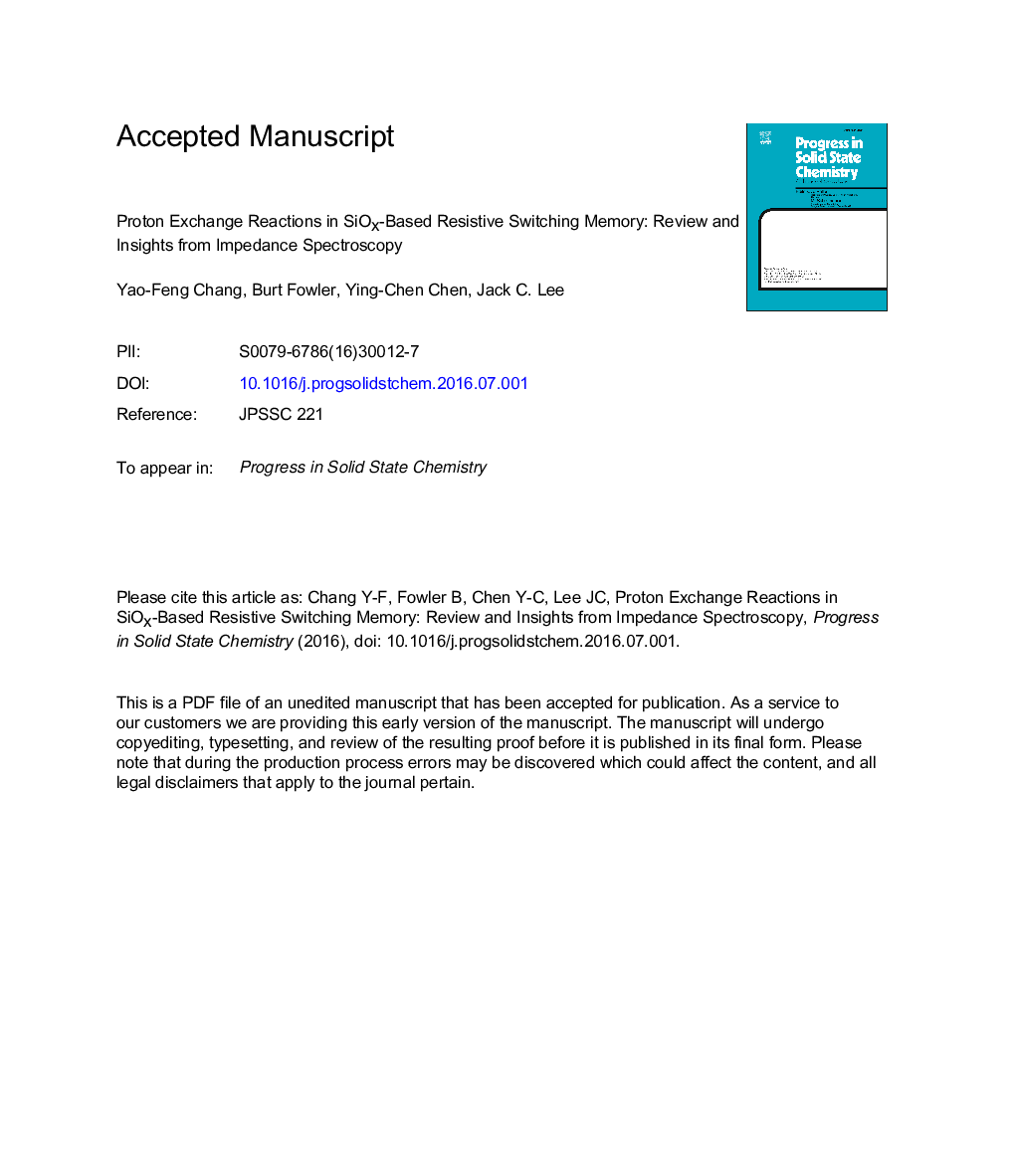| Article ID | Journal | Published Year | Pages | File Type |
|---|---|---|---|---|
| 5443106 | Progress in Solid State Chemistry | 2016 | 36 Pages |
Abstract
In this work, the AC admittance and conductance of non-polar SiOx-based resistive switching memory devices is measured as a function of temperature to investigate charge transport and potential switching mechanisms. After electroforming using a forward/backward voltage scan, devices were measured over the frequency range of 1 k-1 MHz and the temperature range of 200-400 K. For temperature (T) > 300 K, AC conductance follows Ï(Ï) = AÏs, where s is linearly dependent on temperature and close to, but less than, unity. For T < 300 K, Ï(Ï) is almost temperature-independent with s â¼Â 1. A classical hopping model and AC impedance spectroscopy measurements are found to provide reasonable explanations of the experimental data. Defect concentration is estimated to be 1-5 Ã 1019 cmâ3 and independent of device resistive state when modeling charge transport using a polaron hopping characteristic. The energy barrier to electron hopping is estimated to change from 0.1 eV to 0.6 eV and the average hopping distance varies from 1 nm to 6 nm when the device is switched between low- and high-resistance states, respectively. Device switching mechanisms are modeled by simple proton exchange reactions that both activate and deactivate the defects involved in change transport. The impedance spectroscopy results supporting hole-like polaron hopping and the values obtained for the physical parameters provide additional insights into the fundamental mechanisms of SiOx-based resistive memory. Uniform switching performance with robust high temperature reliability and fast operating speed demonstrate good potential for future nonvolatile memory applications.
Related Topics
Physical Sciences and Engineering
Materials Science
Ceramics and Composites
Authors
Yao-Feng Chang, Burt Fowler, Ying-Chen Chen, Jack C. Lee,
